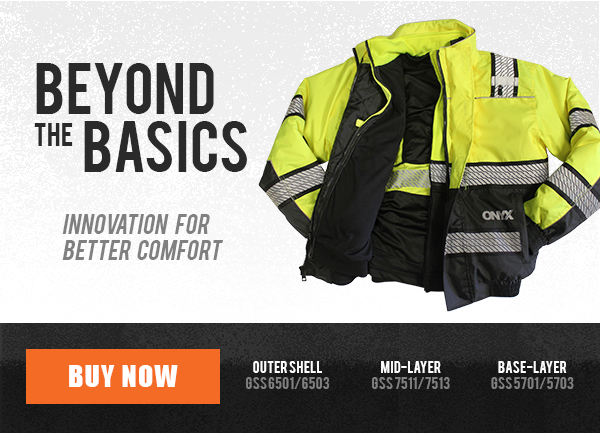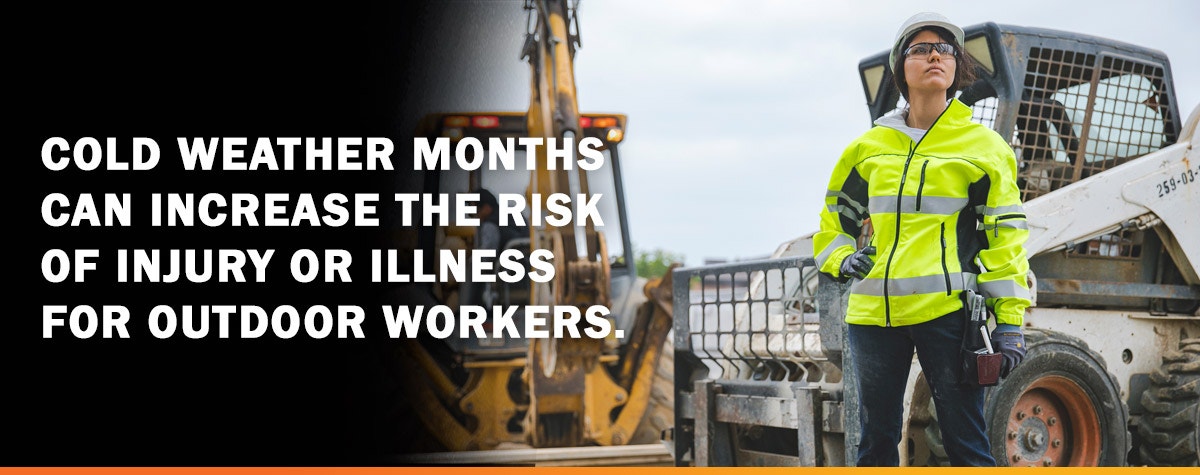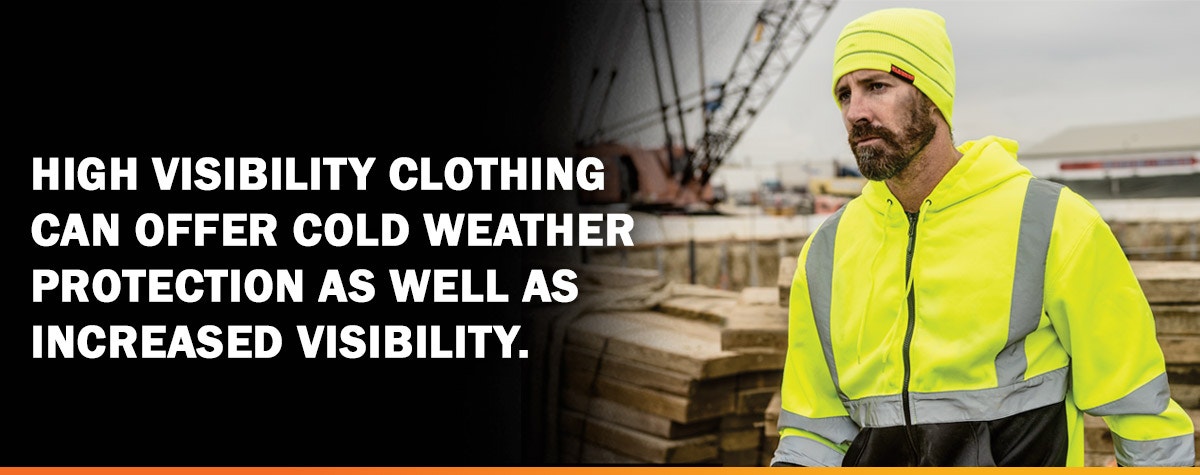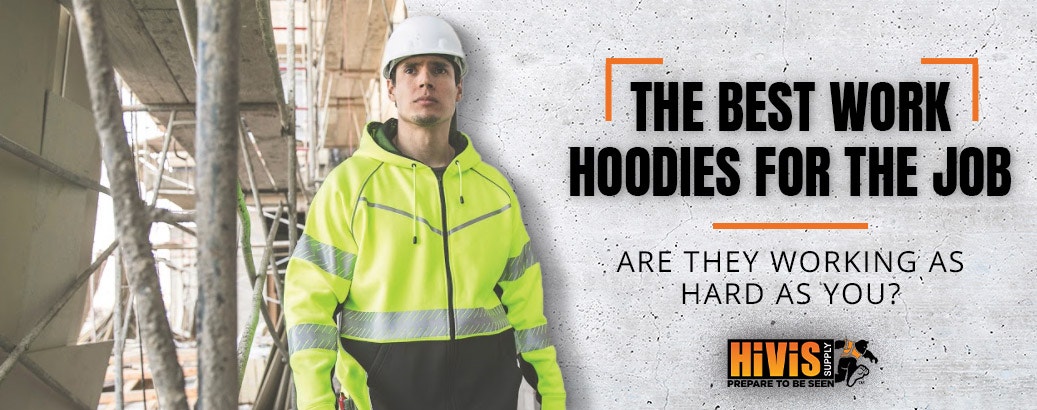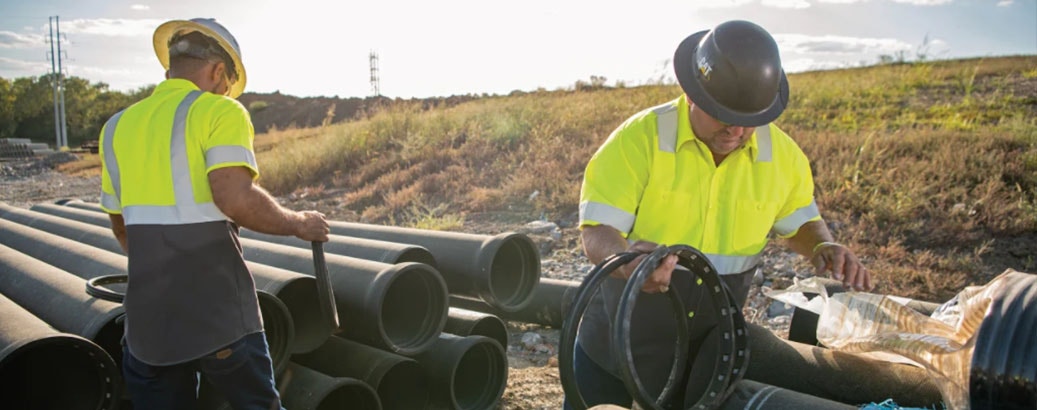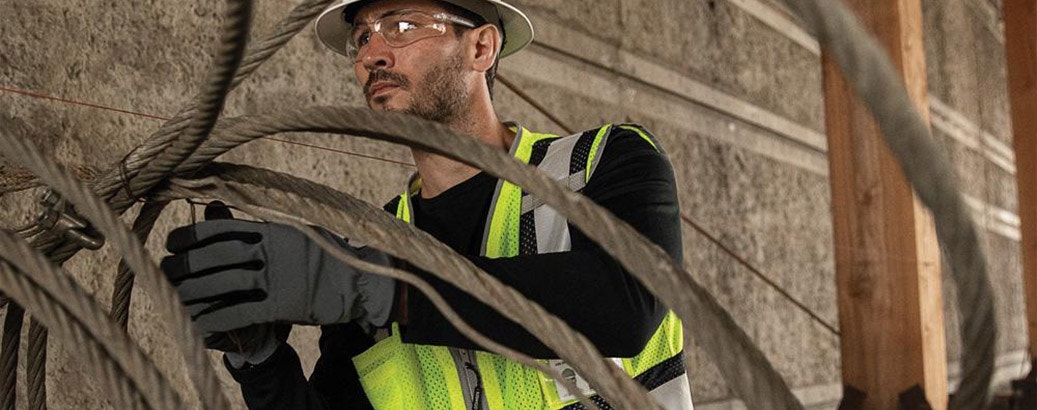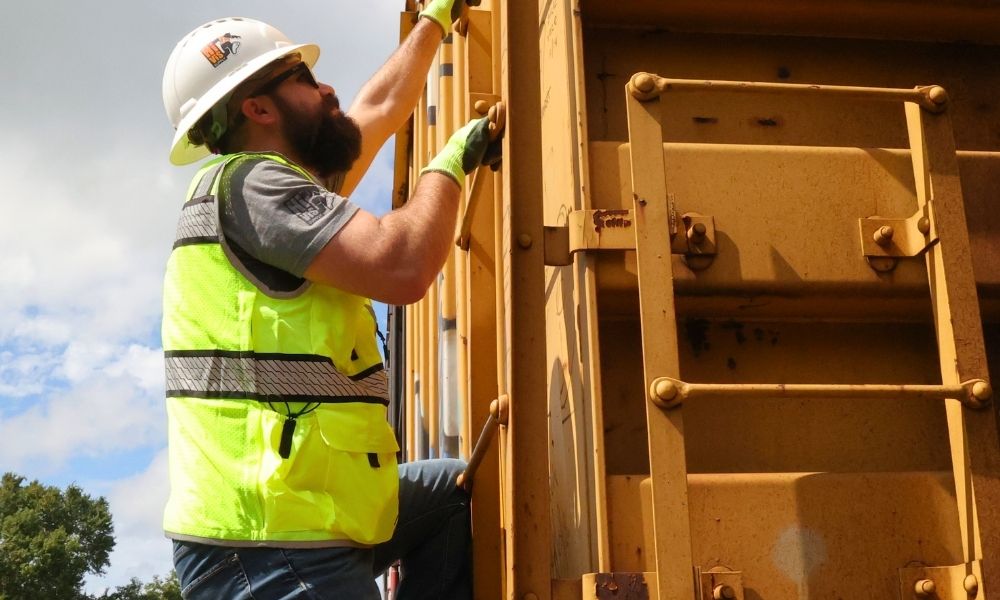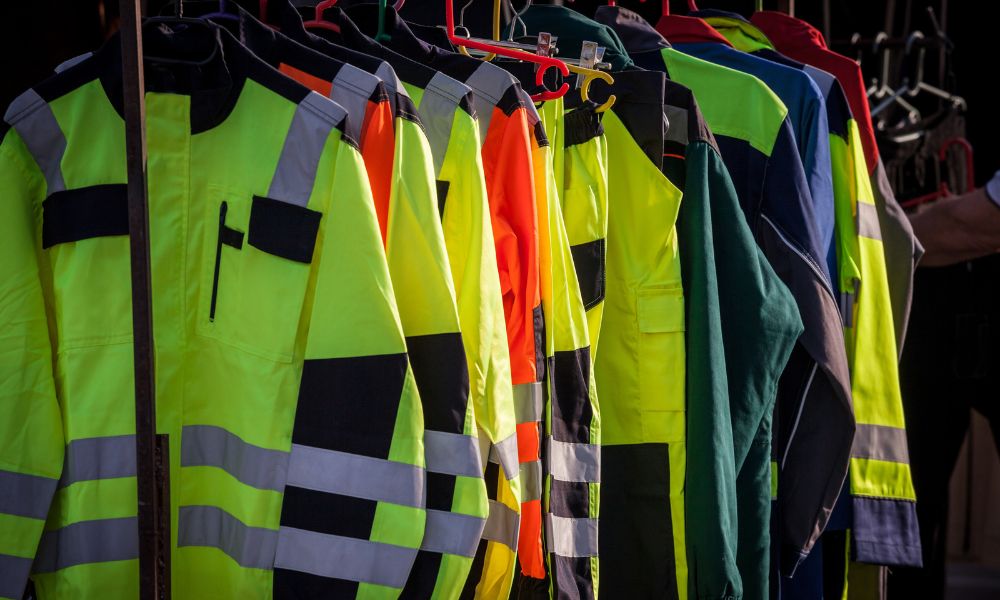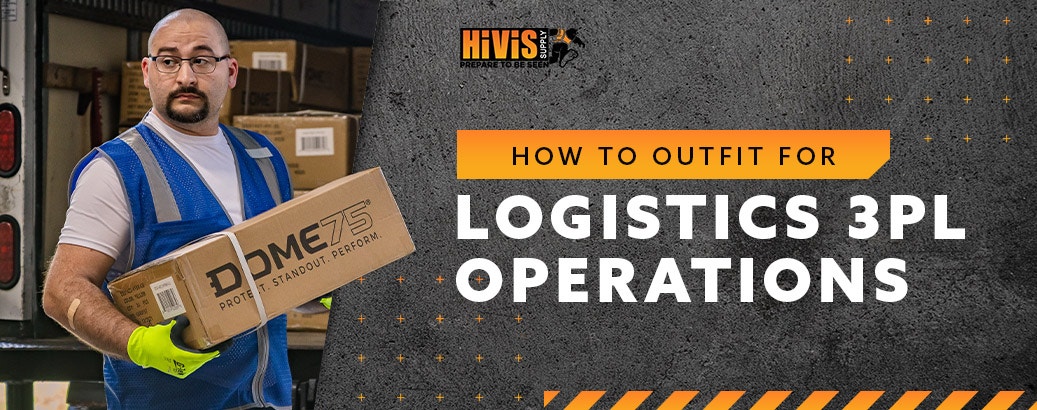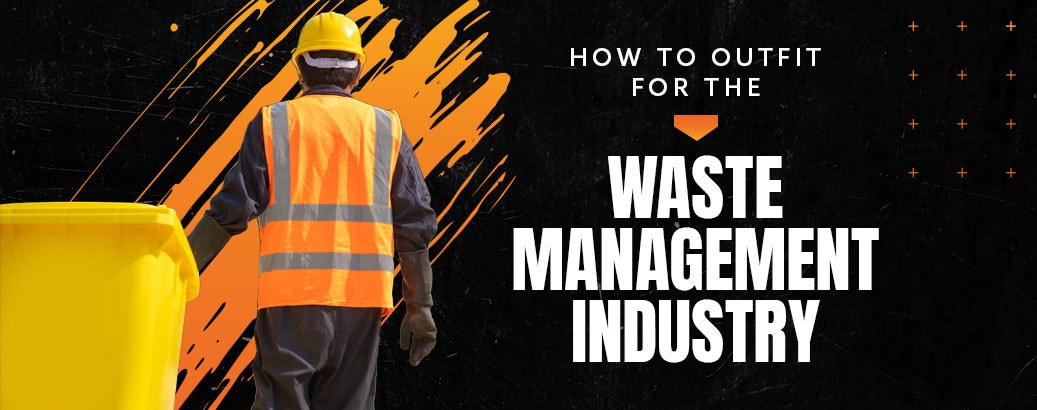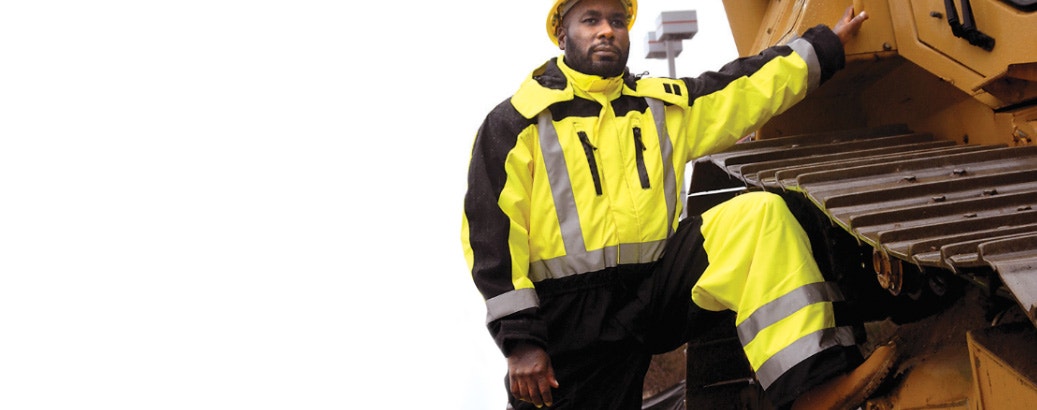3 Steps To Layer High Visibility Clothing & Maximize Safety
- By HiVis Supply
- Sep 24, 2019
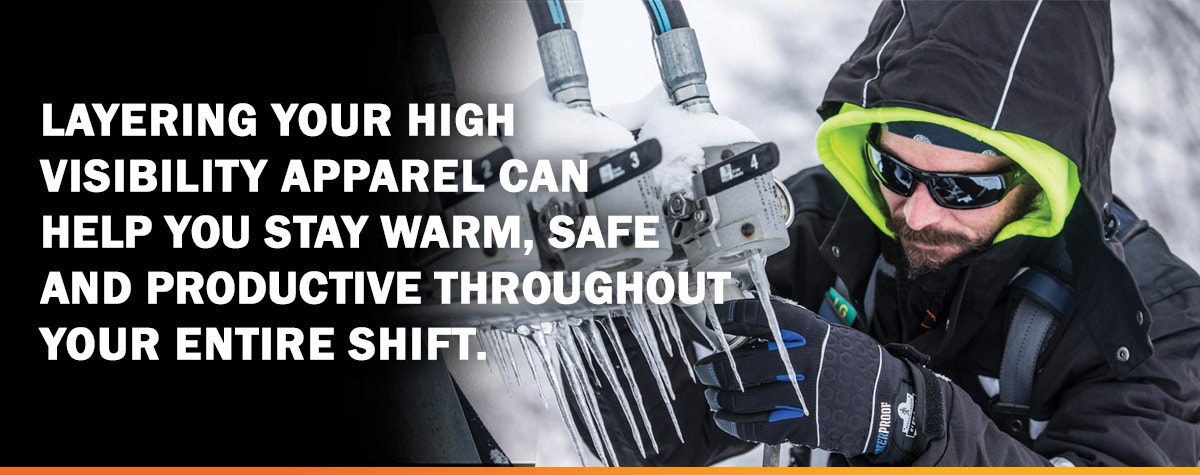
Whether you work roadside construction, emergency response or haul inventory in a warehouse, high visibility safety apparel (HVSA) should definitely be on your radar. High traffic zones, forklift operation and heavy equipment are just a few hazards that compromise worker safety every day. Once you add in factors like cold weather, icy terrain and low-light situations, the chances of someone getting hurt goes through the roof. You could have the best safety program in the world, but it won't do a darn thing if you aren't visible on the jobsite.
High visibility clothing like vests, pants, jackets, coveralls, beanies and gloves can help to reduce safety incidents caused by heavy equipment use, high traffic zones or bad weather. Because when you're seen, you're safer. Take it from our pal, HiVis Hank. When you have questions about the best ways to stay seen and safe at work, he’s the man (er..beast) for the job.
HiVis Hank knows it isn’t easy to know what safety gear you need for every situation, especially when winter weather conditions rear their ugly heads. That’s why he’s sharing a few tips and best practices he’s learned along the way. Let’s take a look.
HiVis Hank’s Cold Weather Layering Cheat Sheet
When it comes to winter workwear, thicker isn’t always better. The last thing you need on the job is to be restricted by heavy and bulky clothing. You need freedom to move and work and you sure don’t need to be slowed down. Rather than wearing gear that makes you look like an abominable snowman, there’s a better way.
Layering your high visibility apparel can help you stay warm, safe and productive throughout your entire shift.
Ever start your day scraping ice off your windshield only to find yourself sweating by mid-day? Do you spend your day in a heated cab, but then have to exit your equipment to talk to another worker? Layering your high visibility gear allows you to move from zone to zone quickly. Just add or remove gear as necessary without losing any of the reflective qualities you need. It’s as easy as 1...2...3.
Here’s some PRO TIPS on how to properly layer your high visibility clothing, protective apparel and accessories.
- Start with a Base Layer to Stay Dry
When you work, you sweat. That’s why the very first layer of clothing you put on should keep that sweat off your body. Moisture that sits on your skin makes you uncomfortable, clammy and cold. Plus, it messes up your body’s own temperature regulating system. HiVis Hank suggests you choose a base layer that wicks away moisture and keeps you dry. Materials like cotton can trap moisture and become soggy. Soggy clothes just increases your chance of experiencing cold stress and you end up smelling like a wookie who hasn’t showered in a week. Nobody wants that! - Add Intermediate Layer to Insulate
Once you have your base layer figured out, it’s time to add on additional hi vis layers that can be removed as needed. Middle layers are meant to trap air close to your body and keep it warm. Long sleeve henley’s can be worn under tee shirts or polos for chilly days. Throw a hooded hi vis sweatshirt over top for extra warmth. Now you got the brightness and reflective qualities you need for added visibility, no matter what the thermostat says. HiVis Hank loves a cozy hoodie, don’t you?
Use Outer Layers for Weather Defense
Think of your outer layer as your suit of armor. When temperatures dip down to to sub-zero, frostbite can happen in minutes. Add in moisture and wind and that makes for downright nasty conditions. Your outer layer should not only protect your insulating layers inside, but offer protection against wind, snow and rain. If dense, cold air somehow penetrates your outer garment and find its way to your body, you risk the danger of hypothermia, frostbite and other cold related illnesses in as little as 30 seconds.
HiVis Hank suggests choosing an outer shell that provides resistance against wind and rain, but also allows sweat to evaporate. High visibility bomber jackets are great at keeping you warm, dry and looking good. Plus, it pairs perfectly with a high visibility sweatshirt and insulated winter pants and bibs. Multi-Layer Jackets are another great option to make layering your gear super easy.
Pro Tip: Just keep in mind all the other hazards you face all day. Do you encounter arc flash or flash fire risks? There’s flame-resistant (FR) hi vis gear that can protect and help you stay visible.
The point is that high visibility apparel has changed. Sure, you can make do with your plain old economy vest. But, why? Today’s options not only help you stay visible in dangerous conditions, but they can keep you warm and comfortable, too. Looking for something a little more fashion forward? Not a problem. There’s complete lines of high visibility gear that matches, so you always look put together. And, some of today’s hi vis gear is designed to be tough and good looking, just like you. Maybe you’re not as good looking as Hank, but then again not many are blessed with his rugged good looks.
HiVis Hank’s Top-Secret Tip to Understanding Garment Warmth Level.
Knowing the warmth level of the gear you need is always a good place to start when choosing high visibility safety apparel. You may need different degrees of insulation if you’re running a snow plow in the frigid conditions of the Northeast than if you’re flagging traffic in Southwest Florida.
There are many factors that can attribute to how “warm” your clothing can feel. Weather conditions, relative humidity, fitness levels, weight, metabolism and health conditions can all impact a person’s core body temperature. You might assume a bigger guy has more (ahem) insulation and think he’ll stay warm. But, that over-caffeinated wiry guy on first shift may actually run hotter and require less insulation to stay comfortable.
The truth is, manufacturers assign warmth ratings based on a material’s ability to withstand extreme weather conditions without cracking or deteriorating. That rating is not really an indicator of how warm you’ll be wearing your gear, especially if you’re standing still and not generating body heat from strenuous work.
Those warmth levels typically range from how well a material resists mild to extreme weather.


Bottom line, some people run hot and some run cold. Looking at warmth levels is a good place to start when choosing gear, but it doesn’t tell the whole story. Warmth is different for everyone and you need to take all these factors into consideration. Consider talking to a professional who can help you make the best decision for your needs. Click here to connect.
HiVis Hank’s Glossary of Terms
It’s not as simple as throwing a fluorescent vest on and going about your day. Working in high risk situations require specific levels of visibility and reflectivity. If you’re craving a little more information on staying safe at work but don’t want to be bored to tears, our buddy HiVis Hank has got you covered. Here’s his cliff notes version of how to choose the right high visibility clothing for you.
ANSI CLASS I: Low level risk. Workers may be working a safe distance from light traffic traveling at speeds below 25 mph.
ANSI CLASS II: Greater risk. Workers on a roadway where traffic is below 50 mph.
ANSI CLASS III: Most dangerous work environment. Workers may be working near traffic in excess of 50 mph, or in conditions that limit visibility.
ANSI CLASS E: Garments that don’t qualify as meeting ANSI requirements when worn alone, but can be paired with Class 2 or Class 3 gear and be compliant.
Enhanced Visibility: Gear that is not required to meet ANSI compliance, but used when greater visibility or identification is needed.
Type O for Off-Road Use: (Includes Class 1): Added visibility to workers who are not exposed to traffic.
- General Industry Workers
- Warehouse Workers
- Oil & Gas Workers
Type R for Roadway Use: (Includes Class 2 & Class 3): Enhanced visibility for daytime and nighttime workers who are exposed to traffic and against complex backgrounds.
- Heavy Equipment Operators
- Roadway Construction Workers
- Crossing Guards
- Towing Operators
Type P for Public Safety: (Includes Class 2 & Class 3): Enhanced visibility for emergency and incident responders and law enforcement in both roadway and off-road environments.
- Law Enforcement
- Emergency Response
- Firefighters
- Accident Site Investigators
Do you believe in HiVis Hank’s mission to keep the workforce safe? Help him spread the word about safety, both on and off the clock. Tell everyone that you believe in staying seen and staying safe by rocking the HiVis Supply Beanie today!
If you need help deciding what gear is best for you, just click here to get in touch with one of our specially trained professionals.


